As a fellow C-section mom, I know that the recovery process can be tough both physically and emotionally. The physical changes that happen to your body can linger long after the surgery.
One of those changes is that bit of extra fat or loose skin on your C-section scar known as the C-section shelf.
Not only can this cause a major blow to our self-confidence and body image, but it can also be frustrating to try and get rid of it through diet and exercise only to find that it still persists.
Let’s take a deep dive into what a C-section shelf is, what causes it, and 10 possible ways to get rid of it – with or without surgery.
What Is a C-section Shelf?
First of all, every mom, regardless of whether she gives birth vaginally or by C-section, can experience the phenomenon of a hanging belly after pregnancy.
But after a C-section, you’re also left with a scar that is made up of tighter, less flexible tissue. After your c-section incision heals, your fascial tissue hardens and produces myofascial adhesions. These can feel tight and knotted and can even cause pain or restriction of movement.
Visually, the scar can puff out and create the look of a “shelf.” The scar itself mixed with any extra skin or loose fat from pregnancy can make your lower abdomen look… well, wonky.
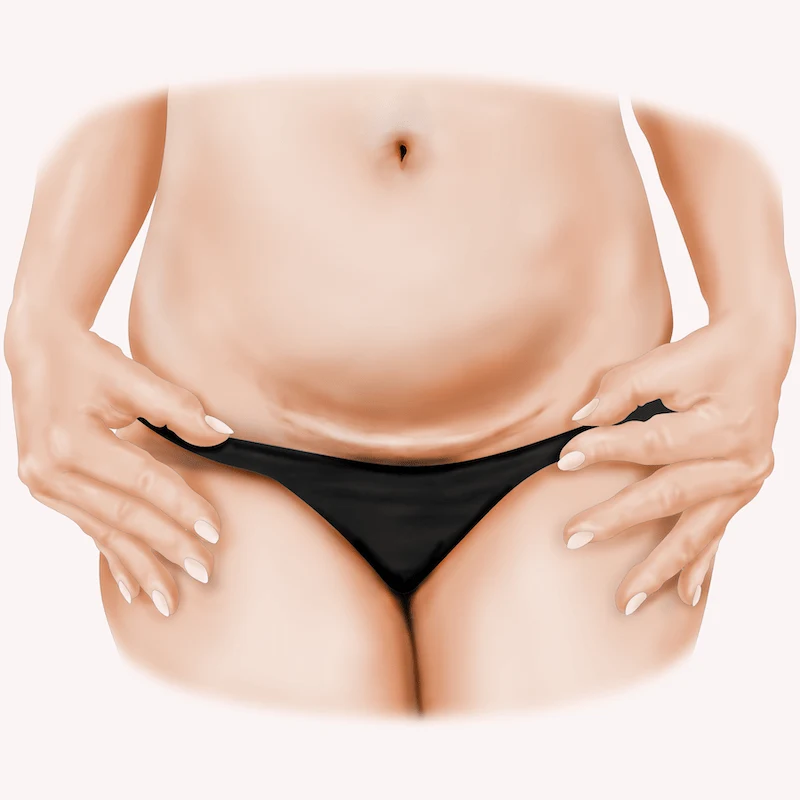
So, the excess fat and skin that hangs around after you give birth can hang over that tightened tissue, creating an even more noticeable shelf-like appearance of the belly above the scar.
What Causes C-section Shelf
Ultimately, it’s the formation of the scar, extra fat, and loose skin around your midsection that causes the shelf… but what causes that?
It’s important to remember that all bodies are unique, and so are C-section scars. In some cases, it’s caused by excess fat, and in others, it’s more of a sagging skin issue. Sometimes, it’s both.
Genetics
Let’s be real, some women are just more prone to storing fat in the abdomen due to their genetics. And more fat storage means more shelving.
Weight gain/loss
Again, every woman’s body is different, but if you gained an excessive amount of weight during pregnancy, or if you had a particularly large baby, your skin needed to stretch even farther which likely made it more difficult for it to snap back into shape after delivery.
On the other side of that, losing too much weight too quickly after pregnancy can also lead to sagging excess skin – we can’t seem to win, can we?
Diastasis recti
During the third trimester, your abdominal muscles can sometimes separate, which is called diastasis recti. This is quite common for C-section mamas. Although diastasis recti can contribute to the appearance of a C-section shelf, it’s not necessarily the main cause.
But, it can make the shelf look worse by weakening the abdominal muscles even more and creating a more noticeable bulge in the lower abdomen.
Scar adhesions
The scar on the outside of your belly is not the only one you are left with after surgery; there are scars on the inside too. And for some unlucky women, tissues can adhere in the wrong way or to the wrong organs during the healing process causing scar adhesions.
While scar adhesions are common and usually do not cause any severe side effects, they can contribute to its development by pulling on the surrounding tissues and causing them to protrude or bulge.
Is C-section Shelf Painful?
It should not be painful in and of itself, but some women say they have some pain or discomfort around the scar site – I know I do.
This could be because of weakened abdominal muscles or even nerve damage or sensitivity in the area around the scar.
10 Ways to Get Rid of Your C-Section Shelf
It’s important to remember once again that no two women’s bodies are the same, and neither are their C-section shelf problems! So, getting rid of them will be different too.
Before you start any of the options below, take a moment to give yourself a well-deserved breather. Your body has gone through a lot and it’s important to appreciate what that little “shelf” represents.
Ways to Get Rid of Your C-Section Shelf Without Surgery
If you’re not quite ready to entertain the idea of surgery, there are a few things you can try to flatten your tummy and banish that c-section shelf.
1) Excercise
If you’re wondering if exercising can help get rid of your C-section shelf, the answer is … maybe.
A consistent diet and workout routine may help get rid of some of the fat you’re storing which can help with the appearance of the hanging belly and shelf, but again, it may or may not come from your belly.
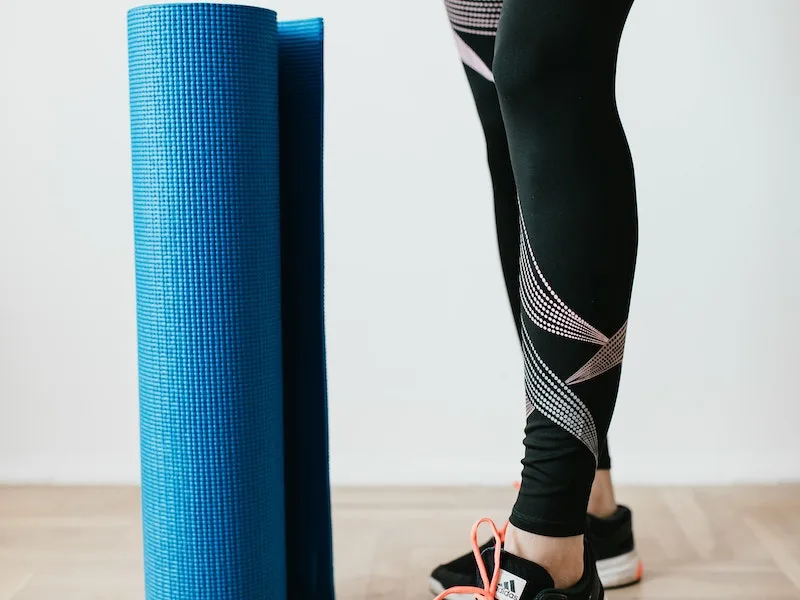
Plus, if your problem is excess skin, exercise will certainly not do the trick.
Of course, always make sure to clear physical activity with your doctor before starting a postpartum exercise routine, especially if you’ve had a C-section. Overexertion can actually hinder postpartum recovery and backfire on your efforts to get rid of the shelf.
2) Pelvic floor therapy
Pelvic floor exercises, like Kegels and squats, are often recommended as part of a healthy pregnancy and postpartum routine.
And if you have diastasis recti, core strengthening exercises are recommended to help close that gap.
If diastasis recti is the major cause, pelvic floor therapy may help. There are a few options when it comes to strengthening your pelvic floor:
- Ask your doctor for a referral to a pelvic floor therapist
- Check out the Nancy Anderson program, which includes pelvic floor and deep core exercises and is specifically for women with the low belly pooch
- Check out Innovo, which is a pelvic floor trainer. It delivers 180 perfect kegels per 30-minute session without side effects. While it’s FDA-approved and clinically tested for incontinence (bladder leaks), kegels in general make sex more enjoyable, reduce Pelvic Organ Prolapse (POP), and help recovery from childbirth. Kegels also strengthen your pelvic floor, which may help reduce that lower belly pooch.
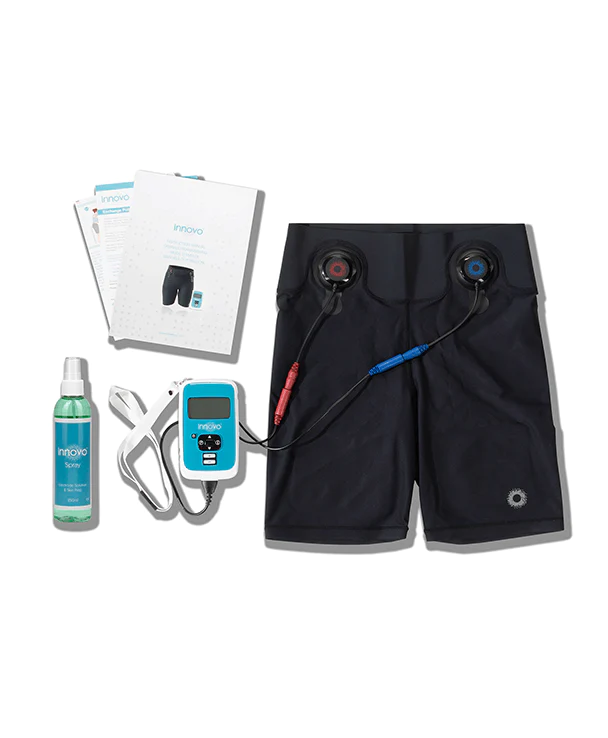
3) Healthy diet
We all know a healthy diet can help to reduce overall body fat and prevent excess weight gain, which is one thing that can cause the pooch, but this may be more of a preventative measure.
If you’re dealing with a shelf that won’t go away, all the dieting in the world might not make it better. A calorie deficit and workout routine will help you lose fat, but there is no guarantee it will come from your abdominal area.
It’s also worth noting though that what you eat may also help with internal scar tissue. Eating a lot of omega-3 fatty acids and antioxidant-rich foods like fruits and veggies, garlic, turmeric, ginger, fish oil, and flaxseed oil can help reduce inflammation and breakdown the scar tissue.

In addition, collagen-rich foods like beef bone broth, skin-on chicken, sardines, chicken liver, collagen-infused drinks, berries, and aloe vera juice may help your skin recover quicker which, while you shouldn’t expect it to work miracles, may be worth a shot.
4) Topical scar gel
If your c-section shelf is on the smaller side, a topical scar gel is an inexpensive method to try.
One study found that topical scar gel containing extract of Allium cepae, allantoin, and heparin improved the color, stiffness, and irregularity of the women’s c-section scars.
A similar gel to what was used in the study but can be bought online is Mederma (available on Amazon).
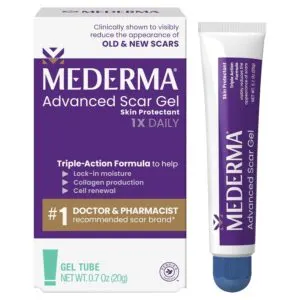
There are other topical scar gels on the market, though. Here are a few good options:
- Dr. Zenovia has a medical-grade scar treatment gel that includes fantastic scar-reducing ingredients like Bromelain, Papain, and Allantoin.
- Kelo-cote is a clinically-tested silicone scar gel that claims to actually flatten the scar, which may reduce your “shelf.”
- Skinuva has been shown to reduce the appearance of scars by up to 70% and is the only scar cream on the market that is formulated with selective Growth Factors.
Scar gels and creams aren’t going to impact any sagging skin or extra fat, but if your scar is protruding, it may help the appearance. I don’t suggest buying any of the cheap scar gels – the ones listed here are medical grade, and while on the pricey side, you should actually experience results.
5) Myofascial scar release techniques
Although it hasn’t been fully proven to be effective, some believe that massaging your scar can help it heal better and help to prevent the risk of adhesions.
One very small study published in Journal of Bodywork and Movement Therapies found that two women with chronically painful C-section scars reported that scar mobility increased in all directions at all points as much as 200%.
These two women completed four 30-min treatment sessions over a period of two weeks. A treating therapist stretched the scar until they felt a release in tissue tension.
The theory is when you massage the skin around the scar, it helps to loosen up the scar tissue and improve the tightness of the surrounding skin. Plus, massaging the scar increases blood flow to the area, which can help speed up the healing process.
6) Myofascial Induction Therapy (MIT)
Similar to myofascial scar release techniques is Myofascial Induction Therapy (MIT). This therapy is done by a medical professional and includes the three following steps:
- Feeling the c-section scar
- Pressing lightly to find the barriers and applying constant pressure
- Holding that pressure for anywhere from 90 seconds to 20 minutes
One study followed 10 women who did weekly MIT sessions for 8 weeks. Every woman in the study experienced changes to the scar, both deeply (shown by ultrasound) and superficially (by measuring the scar fold).
The thickness of their scars decreased by nearly half! Seeing a professional is obviously the way to go, but you can also try this technique at home by feeling your scar, pressing lightly to find tight, knotted areas, and holding pressure as long as you can tolerate it (up to 20 minutes).
7) Ablative fractional laser (AFXL) treatment
There are tons of laser treatments available these days to help with hyperpigmentation, acne scars, and yes – c-section scars.
There is a small study that followed 12 women with mature C-section scars. The researchers found that three sessions of Fractional CO2 laser treatment over the course of 6 months improved and concealed the women’s scars.
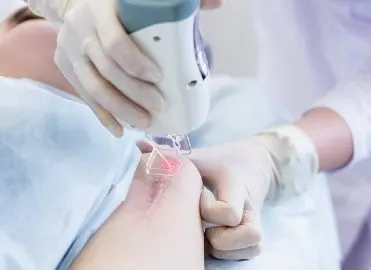
They were specifically looking to improve the texture and color of the scar, which really happened at the 6-month mark. If you want to try a non-invasive treatment to potentially get that c-section shelf to flatten a bit, definitely ask your dermatologist about laser treatment options.
Please note that this is likely going to be considered a cosmetic treatment, so your insurance may not cover it.
8) Use a compression garment
There are several compression garments or belly binders on the market that claim to help reduce the appearance of the shelf after a C-section. Many women swear by the Belly Bandit.
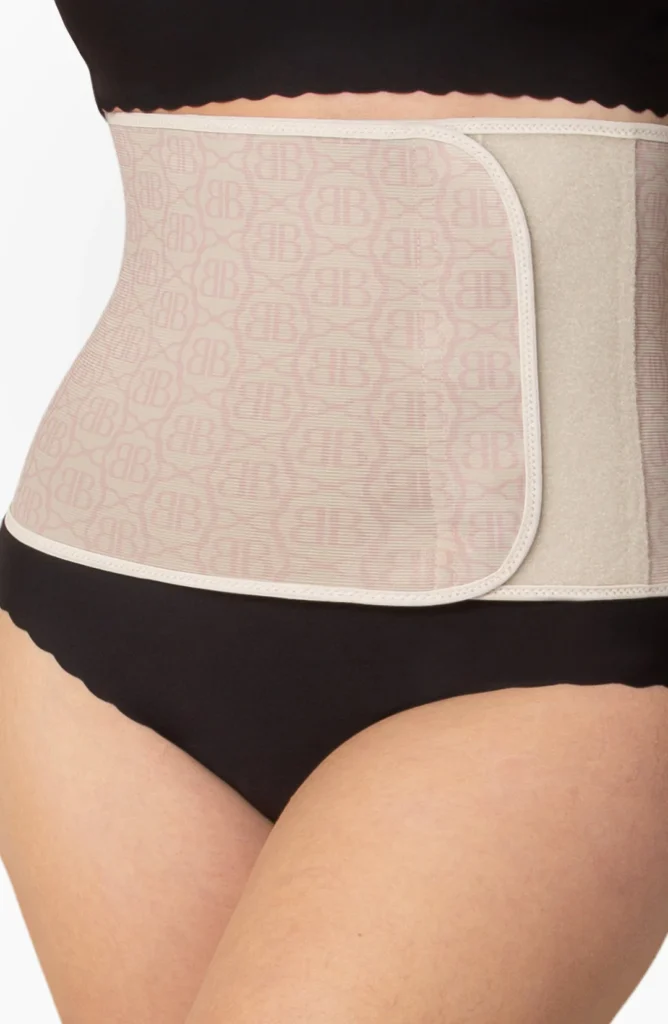
I didn’t know about them until well after I had my C-section, but at the very least it seems they would give a bunch of support which would be much appreciated. I will definitely be getting one on my next go around.
9) CoolSculpting
CoolSculpting is a non-invasive procedure that uses cooling to freeze and eliminate stubborn fat cells. It’s becoming more and more popular among postpartum women.
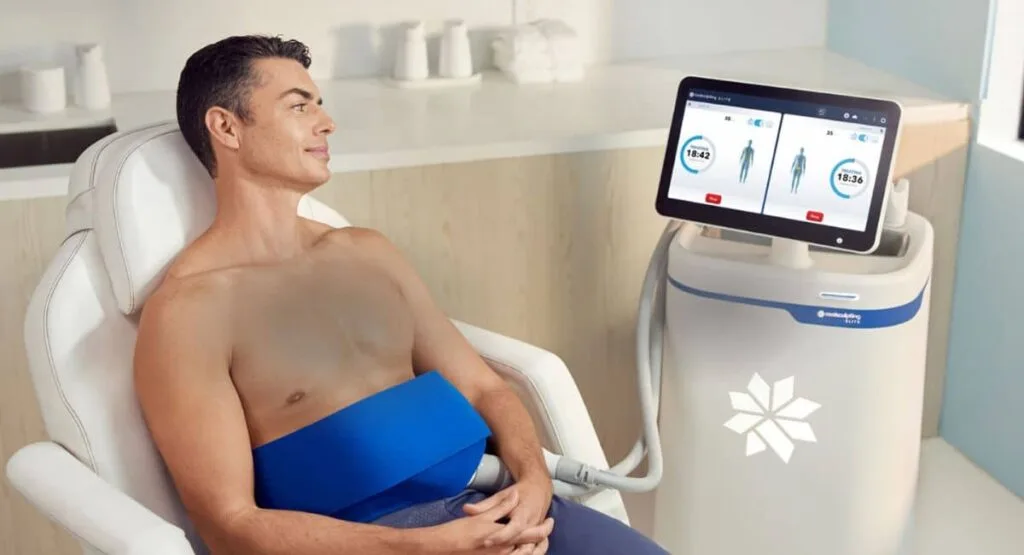
If you’ve got extra fat deposits that diet and exercises aren’t cutting, you might try blasting them with CoolSculpting. You’ll need to be cleared by your doctor before doing a procedure like CoolSculpting, but it could be a good alternative to more invasive procedures.
How to Get Rid of Your C-Section Shelf With Surgery
If you’ve tried everything else and your shelf persists, there may be no other way to get rid of it than to go back under the knife. If you do, you can likely tackle any other issues you’re facing from the effects of childbirth, including diastasis recti, sagging breasts, or excess fat around your midsection.
10) Tummy Tuck, Lipo, or Mommy Makeover
You’ll want to consult with an experienced plastic surgeon to determine what surgical treatment would get rid of your C-section shelf. Depending on if it’s being caused by excess fat or skin, or both, they may recommend either a tummy tuck or some liposuction.
Many moms splurge and go for the big mommy makeover, which combines multiple procedures that enhance the breast and tummy area.
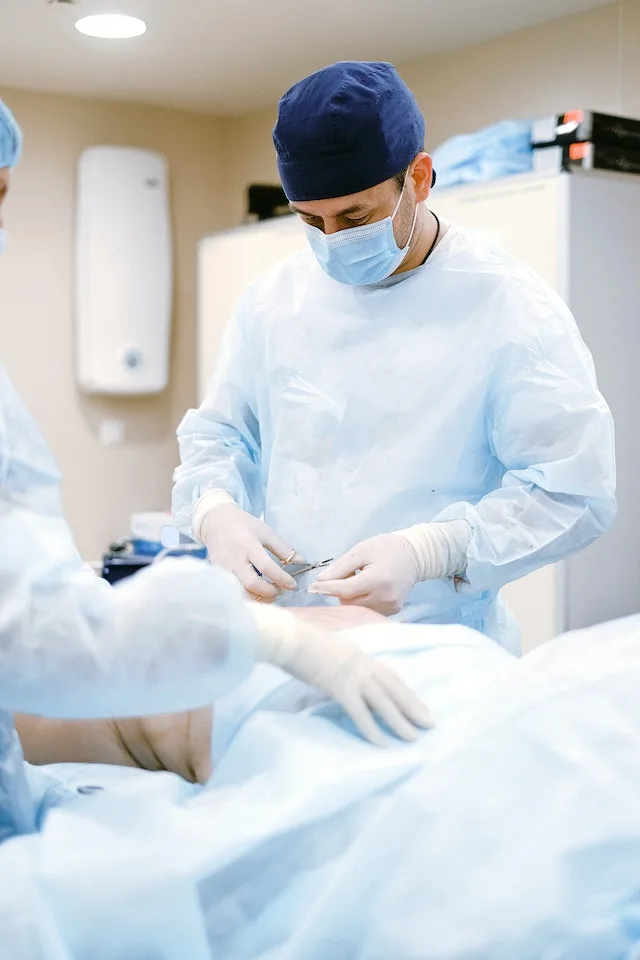
But tummy tucks and mommy makeovers are not covered by insurance, so it might not be an option for everyone.
Also, keep in mind you’ll want to wait until after you’re done having babies to opt for surgery. Otherwise, it may just come back when you have another baby. You also have to wait at least 6 months after you’re done breastfeeding if you plan to have any work done to your breasts.
Conclusion
Every mother’s journey to motherhood is unique, and a C-section shelf is just part of it.
While it may look a bit different for every woman, it’s a totally normal response to the major surgery that brought your little one into the world.
I know at times it’s easier said than done, but try to be kind to yourself and your body, and be proud of the amazing work it has done.
And then, once you’re ready to, just know that there are ways to get rid of it!

Jamye Molina is a mompreneur and the creative mind behind Molina Writing Co. Her writing has been featured on several parenting blogs, where she shares her first-hand experience with motherhood. When she’s not writing, you’ll find her traveling or enjoying the simple joys of life with her husband and toddler.

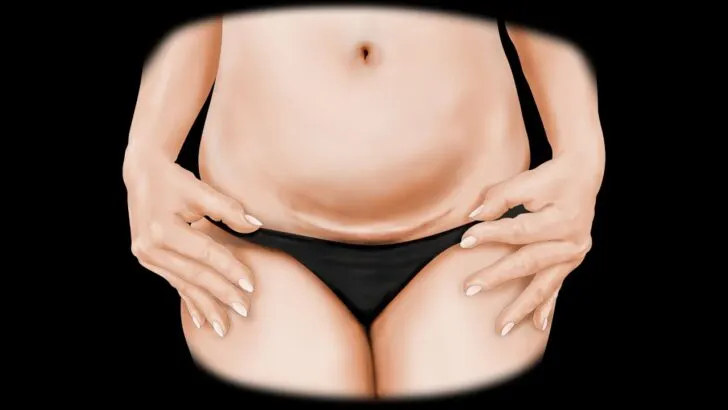
Wren Marilyn Zhang
Sunday 4th of February 2024
Thank you for sharing your personal experiences and stories It takes courage to open up and you do it with such grace and authenticity
Angie Johanna Adalynn Potter
Saturday 3rd of February 2024
This blog is like a breath of fresh air in the midst of all the negativity on the internet I'm grateful to have stumbled upon it